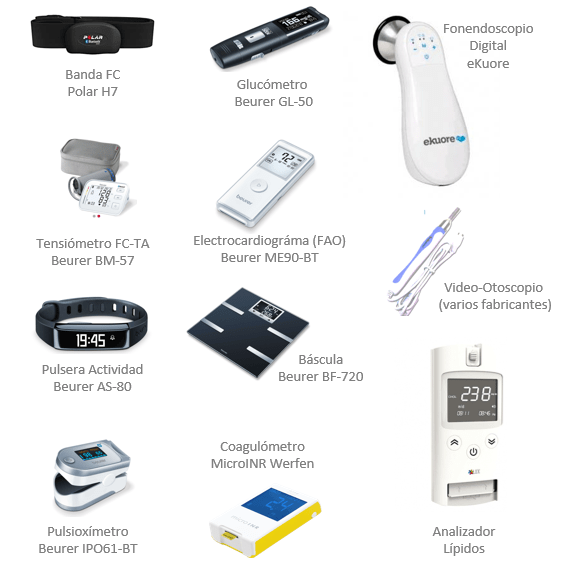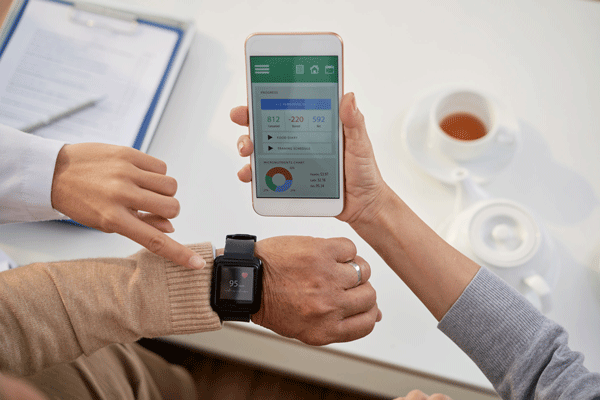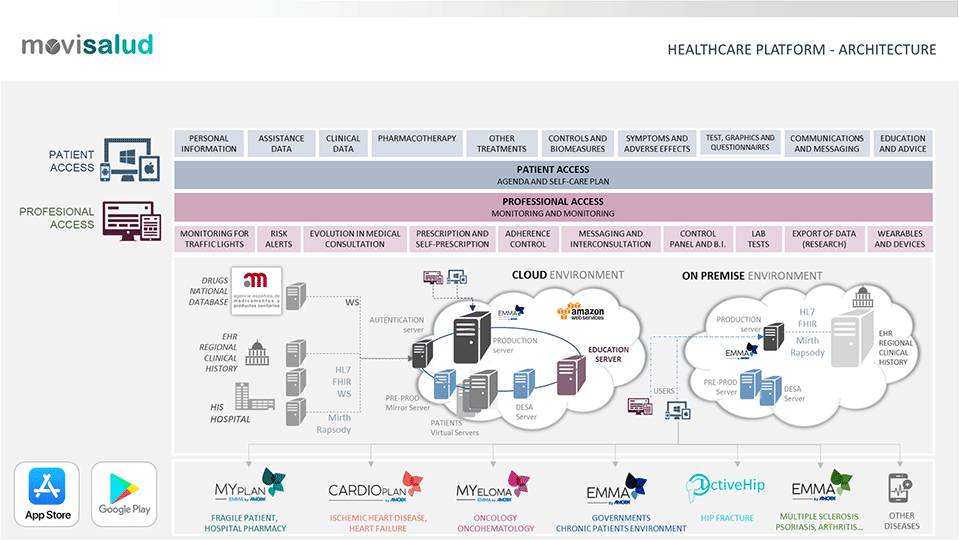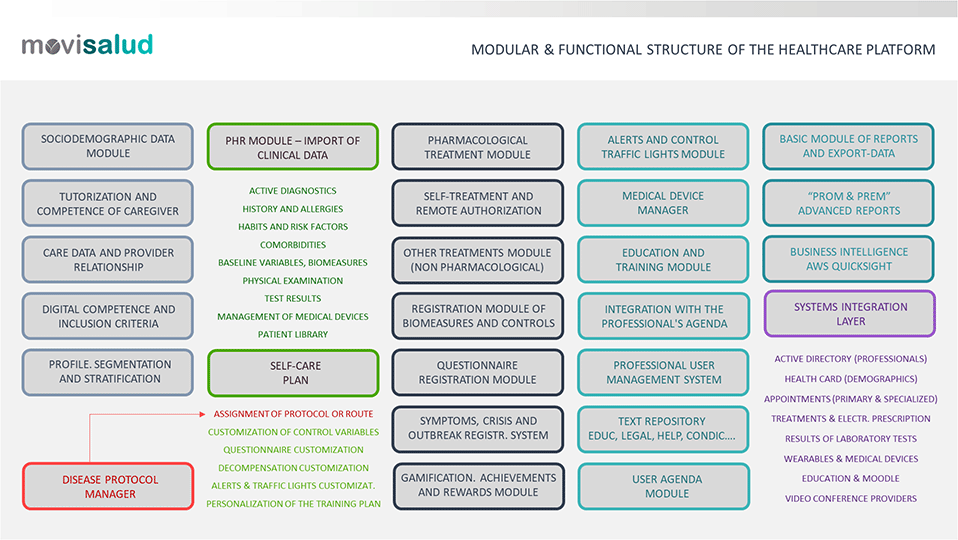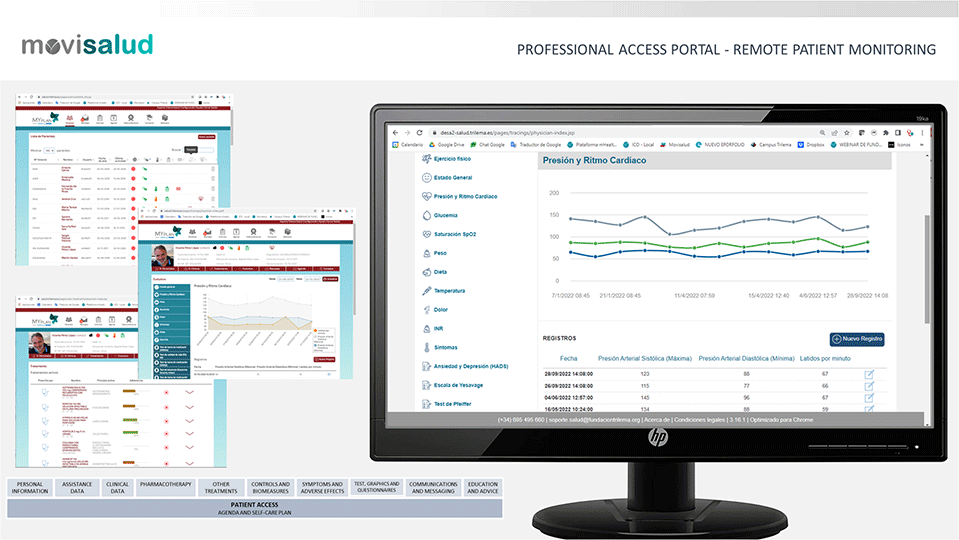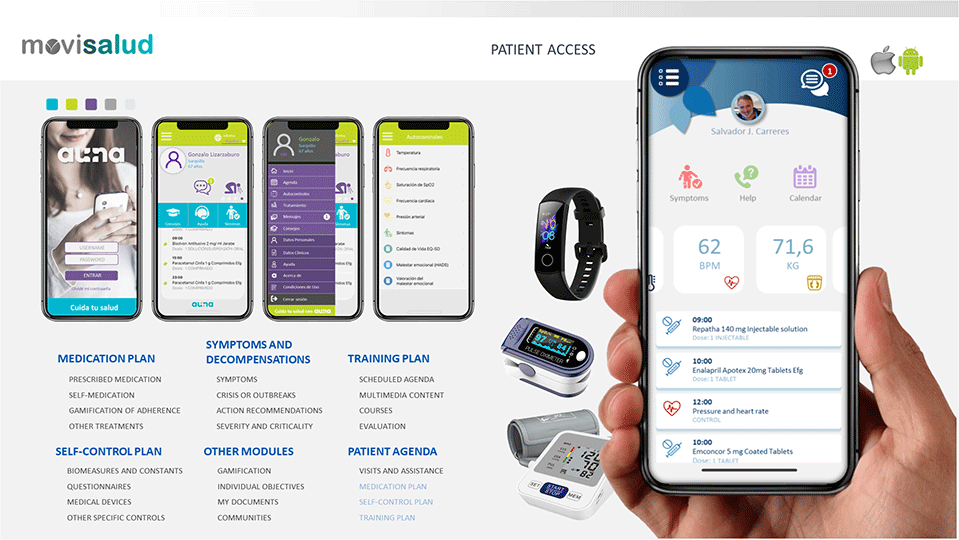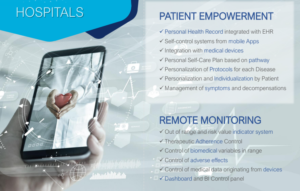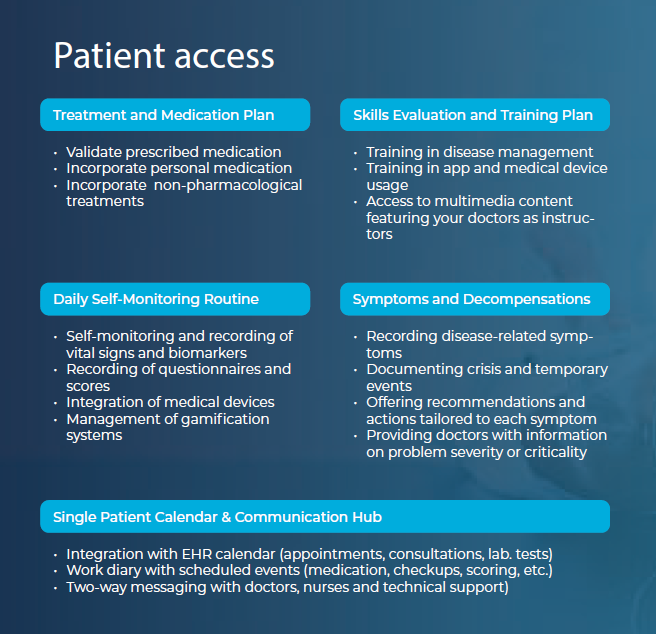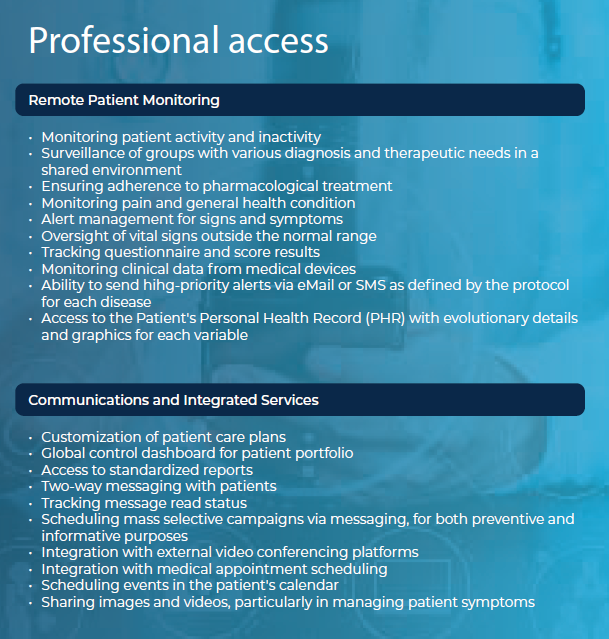platform
MOVISALUD
Under a multi-layer design and a distributed architecture in several server profiles, Trilema’s CLOUD technology allows the self-monitoring of the patient and remote monitoring by professionals.
How it works
There are 2 access routes to the platform:
- Healthcare professionals access it from their computers via a web portal. + info
- The patient has a mobile App available on Google and Apple shops. +info
Once the healthcare professional registers the patient on the platform, the system generates the access keys, gives them to the patient, and automates the consent process.
For each project or care pathway, we agree with the researchers and customise the clinical record and the objectives of the patient’s individualised care plan.
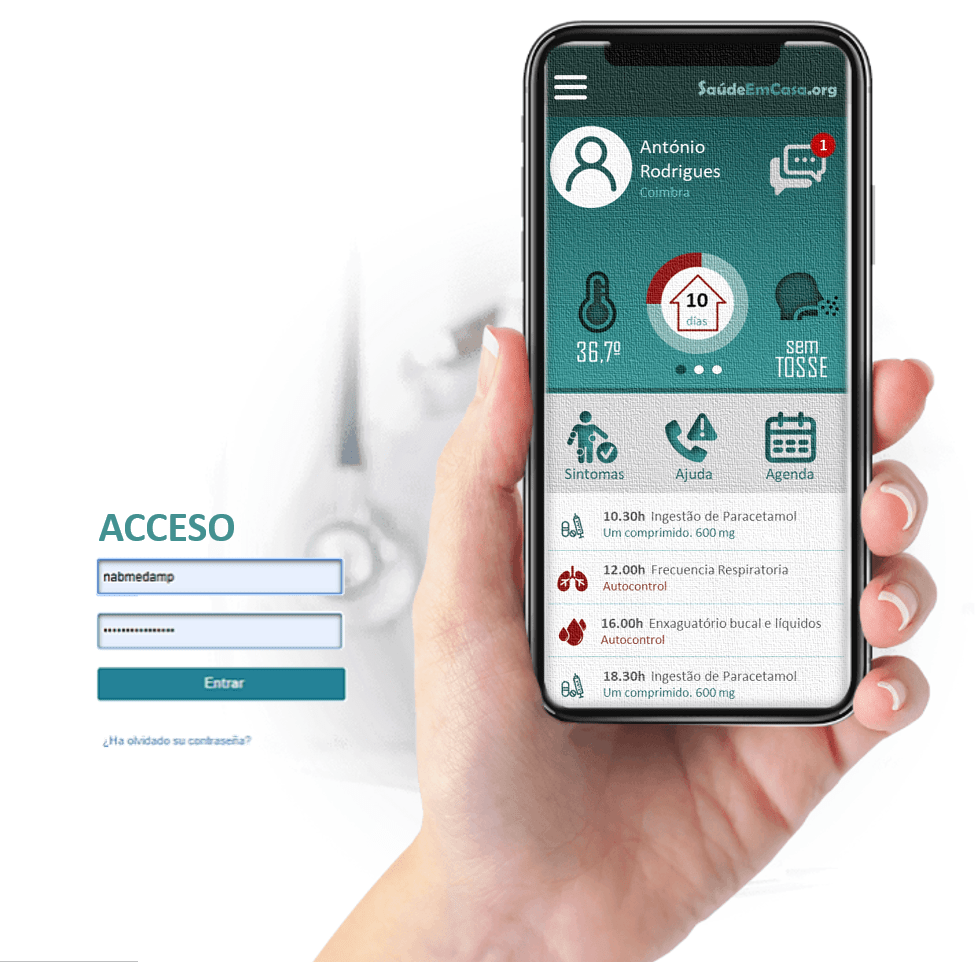
Patients have access to a telematic help service for resolving incidents related to technology, mobile terminals or their use.
- The call center staff also supports the healthcare professional in the patient onboarding process by providing telematics training.
- This service exempts them from all the problems associated with mobile phone models, disk space on the terminal, loss of access codes or passwords, changes of technology between IOS and Android…
We sign a personal data processing contract for each hospital. The centre acts as the data controller and enters into a contractual relationship with us as data processors. In Hospital Centres that so wish or permit, the Platform allows the integration of data from corporate information systems (demographic data, diagnoses, test results or pharmacological prescriptions, which can be integrated in a bidirectional manner).
The Ministry of Health, and in particular the Spanish Agency for Medicines and Health Products (Agencia de Medicamentos y Productos Sanitarios -AEMPS), acts in the system as the provider of the medicines database. We also use the picture of the medicine, route of administration or package leaflet to facilitate therapeutic compliance.
The MoviSalud platform is hosted on Amazon AWS infrastructure in Ireland. It is a solid, robust and mature platform that allows us to adapt the access environment and personalise the care plan to the needs of each project, each pathological profile, each speciality or disease. In short, it is a mobile personal health record (PHR), of the horizontal type, integrated with a web manager for remote control and monitoring for surveillance and follow-up of professionals. The same platform serves patients with heart disease, oncology, paediatric or complex chronic multi-pathology patients, but each group has a specific environment adapted and personalised to their needs as defined by the researchers.
Our platform has a powerful remote monitoring system based on alerts and traffic lights linked to individual patient targets.
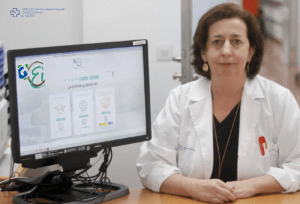
Remote monitoring
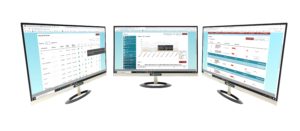
Health professionals (doctors, pharmacists, nurses…) have web access to the MoviSalud platform to remotely check the status and behaviour of their patients and thus monitor their patients’ therapeutic plan and self-care plan.
The Homepage shows the list of patients active in the project and the main functionalities, such as messaging, reports, agenda, videoconferencing, library or training.
Various coloured icons allow clear visibility of the status of a patient and the status of a cohort at a glance. These traffic lights respond to clinical and risk criteria that we agree with the researchers in the design of each pathway or project.
- The adherence traffic light, for example, shows in three colours the patient’s adherence to his or her drug therapy in the last month.
- The active message traffic light means that a patient has not read a message sent by the professional team.
- The appointment traffic light means that the patient is scheduled for a visit within a certain, agreed number of days.
- The traffic lights associated with Bi-measures, such as weight, blood pressure, blood glucose, etc., also provide criteria for risk or non-compliance with the prescribed care plan.
- The results of questionnaires and values from wearable devices can also participate in the traffic light criteria offered by the platform.
- Some traffic lights show risks that invite action, especially those that combine fever with the activation of certain symptomatology.
The messaging module provided by the professional manager incorporates functionalities such as patient reading control. In addition to individual patient mailings, it also allows programmed mass mailings with different selection criteria (ICD, age, sex, prescribed drug, etc.).
When the professional selects a patient from the list, he/she accesses his/her PHR (personal folder) with his/her evolutionary graphs and behaviour and compliance tables. The descriptive detail of the PHR can be found in the section “mobile self-monitoring”.
Access to patient treatment provides us with a dynamic bar with individualised therapeutic compliance for each of the active drugs in the Medication Plan. When you select a drug, it will give you all the details, the history of dosing and compliance and the historical adherence profiles in three colours. It also shows the information that the AEMPS (Spanish Agency of Medicines and Medical Devices) offers the patient for each medicine prescribed (photo, package leaflet, route of administration, etc.).
The platform has typified standard reports that researchers can use. In addition, we set up new reports. The web manager also allows us to incorporate very specific routines, programmes, tools or calculators in vertical programmes or specific pathologies essential for daily clinical practice.
Professional access is a tool for doctors, nurses and pharmacists, which fulfils a function where hospital HISs do not normally reach, as it focuses on the exploitation of data entered by patients.
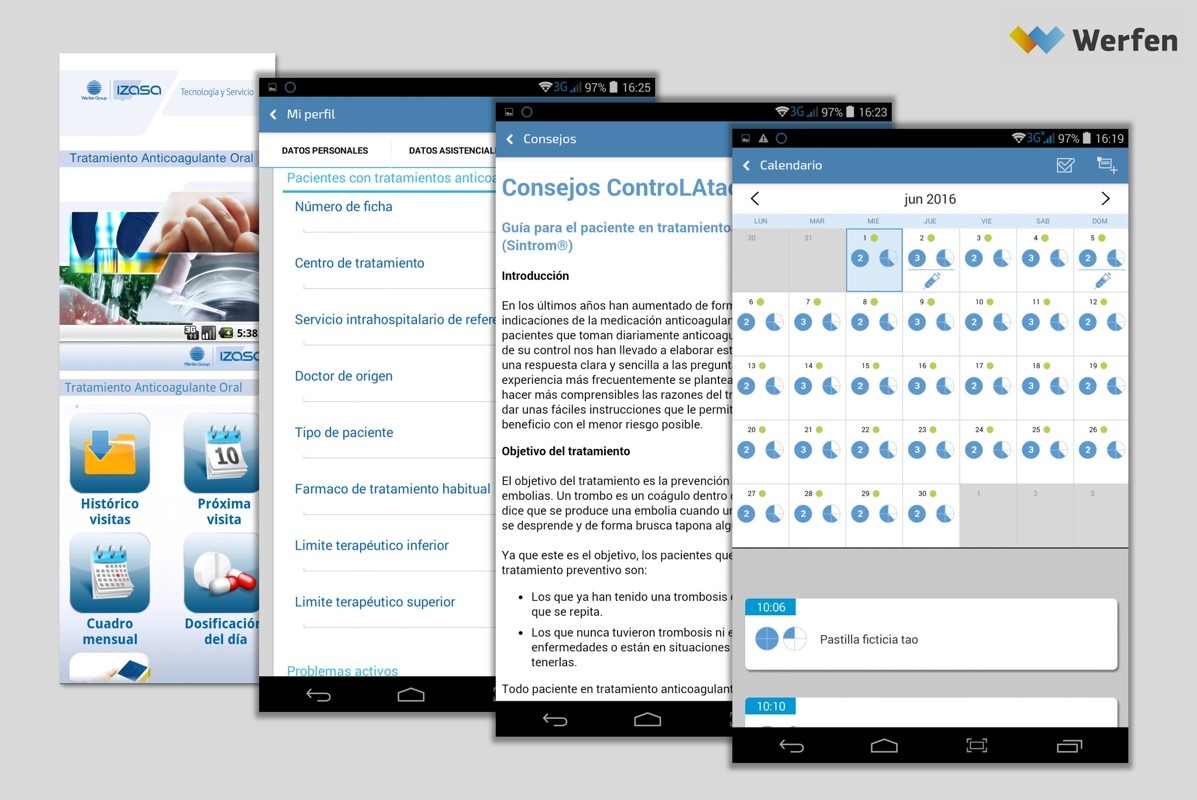
Mobile self-monitoring
The patient’s mobile application follows the structure of a personal health folder. The user data are divided into socio-demographic data, including contacts and guardians; care data (relationship with the service provider, health card, health centre, assigned hospital, etc.); and the specific clinical data sheet.
The health data structure that appears on the patient’s mobile/tablet comes either from the Movisalud platform or from the integration with the provider. By default, it collects standard blocks such as diagnoses, allergies, history, risk factors and the baseline and evolutionary control variables specific to each disease or project. We customise this section for each project according to scientific criteria.
The self-management plan for each disease incorporates a list of modules or sub-programmes for patient follow-up that we call “self-monitoring”.
- It integrates different BiMeasurements, questionnaires and other control modules.
- In most projects we include standards such as general condition, heart rate, blood pressure, blood glucose, weight and perimeters, relevant analytical data, food and diet, training or exercise, smoking, etc.
- The platform currently has a library of more than 70 configurable SELF-CONTROLS and QUESTIONNAIRES per project available to the research team.
The pharmacological treatment module is Movisalud’s most powerful: it is integrated with the AEMPS database, is regularly updated and allows drug selection by product brand or by active ingredient.
The Platform offers different scenarios for monitoring the patient’s medication plan, giving the patient more or less freedom in self-prescribing.
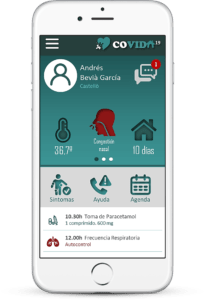
The App has a two-way messaging system between professionals and patients and allows the sending of files.
And it is integrated with the eLearning education server where we host the educational programmes, in simple responsive environments that include advice and recommendations, sometimes associated with a Moodle course as a pedagogical support for self-care, and always with videos.
The management of decompensation is an important section in Movisalud.
- We establish the list of symptoms for each pathological setting and build multilevel decision trees that allow us to create patient-guided questionnaires for each of the symptom branches.
- Depending on an answer, the next question is triggered.
- The module also provides recommendations to the patient based on their answers, from calling the emergency room to taking them to a specific section of the educational portal.
Finally, the patient’s agenda incorporates all the daily planning of the care plan: prescribed medication intake, check-ups, biomedical measurements, questionnaires that have been established in the individualised plan or scheduled appointments, scheduled events with assigned times and push message alerts…
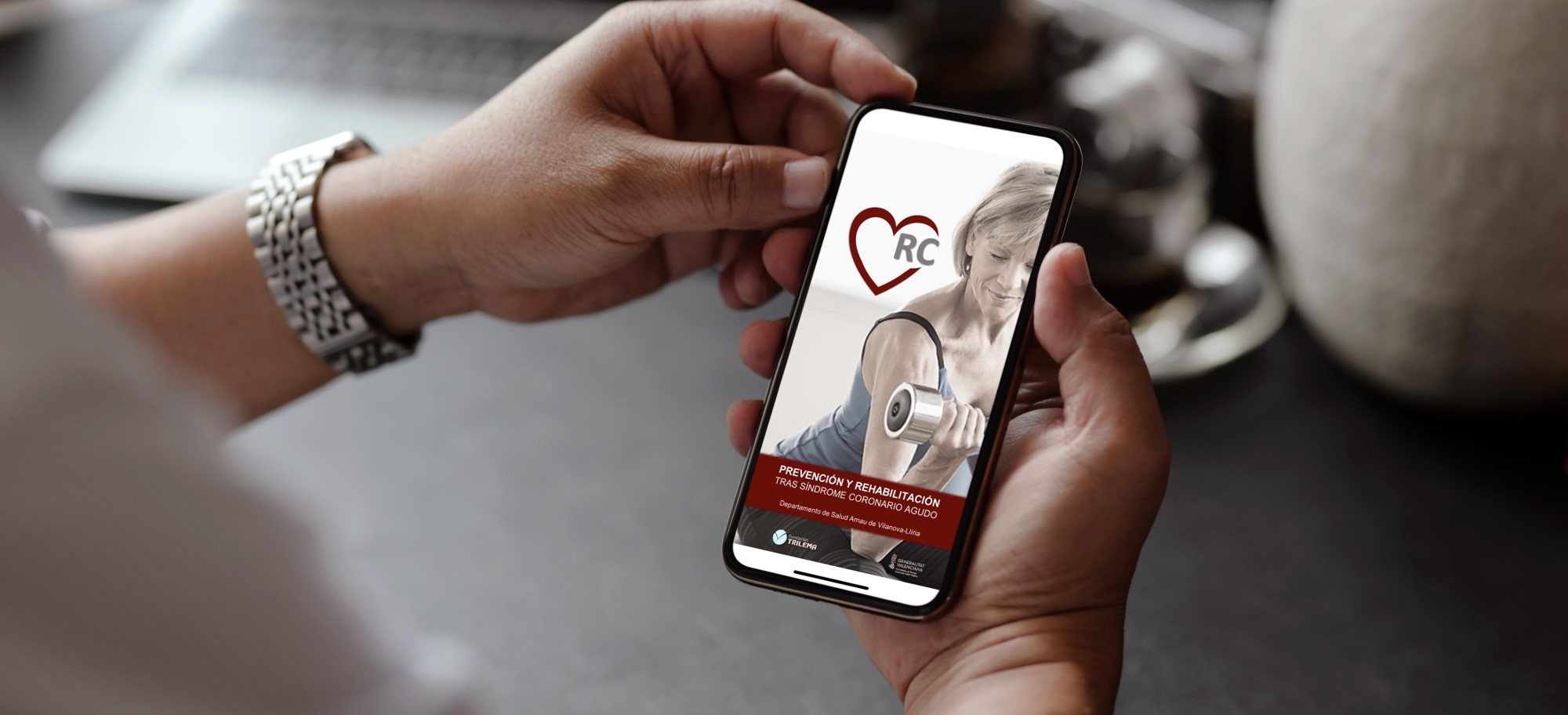
Wearable integration
The platform integrates itself with medical devices that measure biometrics automatically such as blood pressure, beats per minute, weight, exercise, calorie intake, level of oxygen in blood, glucose levels, etc.
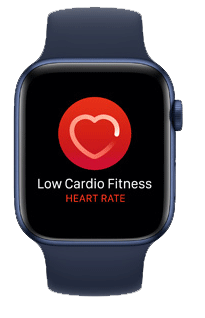
We have various projects that use integrated devices via Bluetooth ® under the connectivity layers of Google Fit and Apple Health.
We also have experience with direct integration of devices that had their own manufacturers’ software (coagulation from Werfen Group for the PT/INR testing or the calprotectin test fromBÜHLMANN Laboratories de BÜHLMANN Laboratories).
